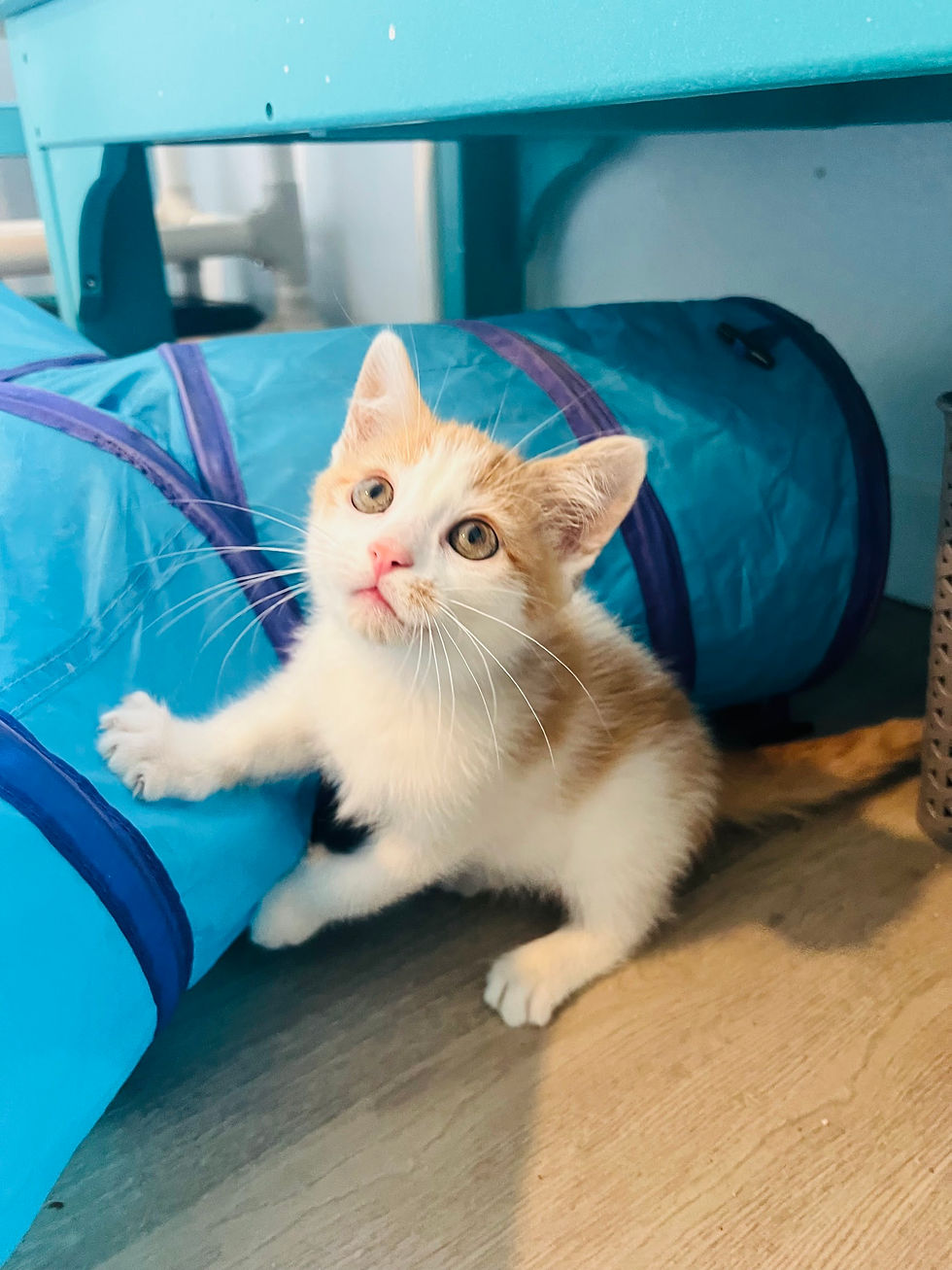Is Spaying and Neutering Safe?
- Kitten Alliance

- Jun 7
- 3 min read

Spaying and neutering are some of the most important — and most misunderstood — procedures in animal rescue. If you're a new adopter or foster parent, it's completely normal to feel nervous about putting a kitten or cat through surgery.
But here’s the truth: spay and neuter surgeries are safe, routine, and essential to your pet’s health — and to saving lives in our community.
Let’s walk through what to expect before and after surgery, and why these procedures are nothing to fear.
Is It Safe?
Yes. Spay (female) and neuter (male) surgeries are among the most commonly performed veterinary procedures in the world. When performed by trained veterinarians using modern techniques, the risks are very low — especially when the kitten is healthy and of proper weight.
At Esther Neonatal Kitten Alliance, we spay/neuter all of our kittens before adoption, usually around 8–10 weeks of age, once they reach at least 2 pounds in weight. Early-age spay/neuter is endorsed by the American Veterinary Medical Association and is standard practice at progressive shelters and rescues.
Why Spay and Neuter?
Prevents overpopulation — Just one unaltered cat can lead to hundreds of kittens in a few years.
Reduces health risks — Spaying eliminates the risk of uterine infections and greatly reduces breast cancer risk. Neutering prevents testicular cancer and reduces prostate issues.
Improves behavior — Neutered cats are less likely to spray, roam, or fight. Spayed cats won’t go into heat — which means no loud yowling or attracting unwanted attention.
Increases adoptability — Altered pets are often more relaxed, social, and easier to place in forever homes.
What to Expect Before Surgery
Fasting — Your kitten may be asked to stop eating the evening before surgery, depending on their age and weight. Water is usually allowed.
Wellness Check — A vet will examine your kitten before surgery to ensure they’re healthy enough for anesthesia.
Comfort and Transport — Bring your kitten in a secure carrier with a soft blanket or towel. Kittens do best when kept warm and calm.
What to Expect After Surgery
Grogginess Is Normal — Your kitten may be sleepy or disoriented for several hours after surgery. Keep them in a quiet, safe space while they recover.
Appetite May Dip — Some kittens may eat less the first day — that’s okay. Try offering a small amount of wet food to encourage eating.
Keep It Clean — Avoid bathing or rough play for at least 7–10 days. Monitor the incision site (for females) for redness, swelling, or discharge.
Limit Activity — Even playful kittens need rest! Use a small room or playpen if needed to prevent jumping or roughhousing.
No Cone? No Problem. — We rarely use e-collars on young kittens unless they’re licking the incision excessively — which is uncommon.
Follow-Up — Ask about any needed rechecks or stitches removal (though many use dissolvable sutures).
When to Call the Vet
If you notice any of the following, contact your vet or rescue team right away:
Bleeding at the incision site
Severe lethargy or unresponsiveness
Refusal to eat for 24+ hours
Vomiting or diarrhea
Fever (ears or paws feel hot)
Spay/Neuter = Compassion in Action
Choosing to spay or neuter your pet is a loving, responsible decision. It helps protect their health, improves their quality of life, and prevents unwanted litters from entering overwhelmed shelters.
At Esther Neonatal Kitten Alliance, we see the difference spay/neuter makes every single day — in fewer kittens needing emergency care, in calmer adult cats finding homes, and in a future where no cat is unwanted or unloved.




